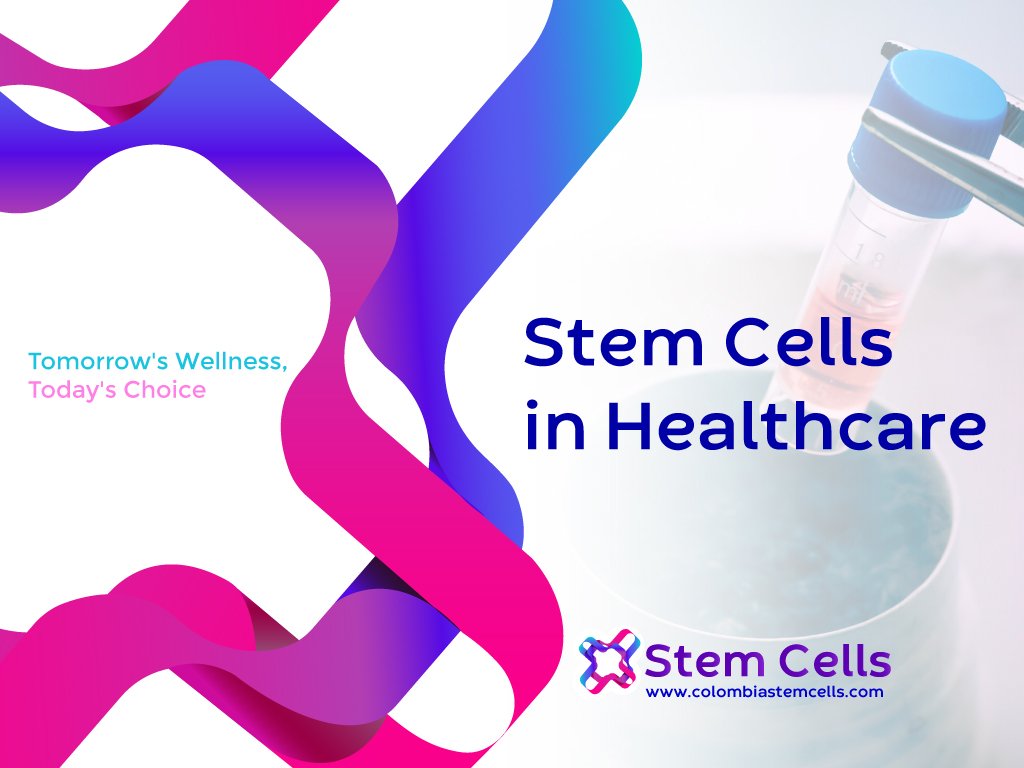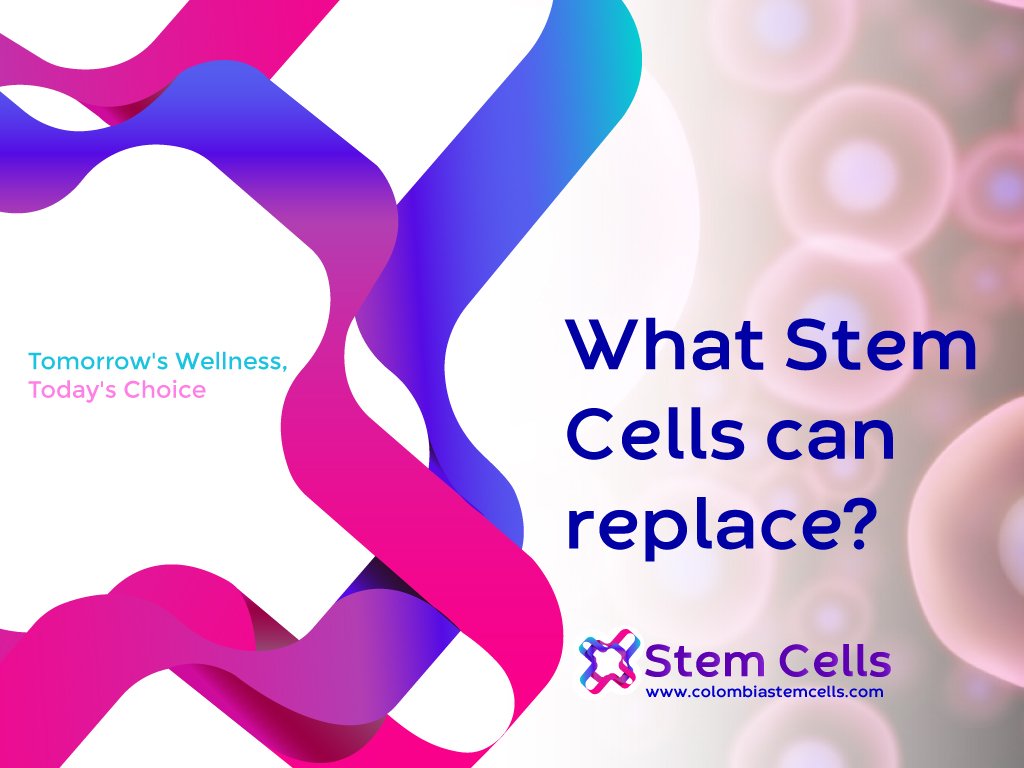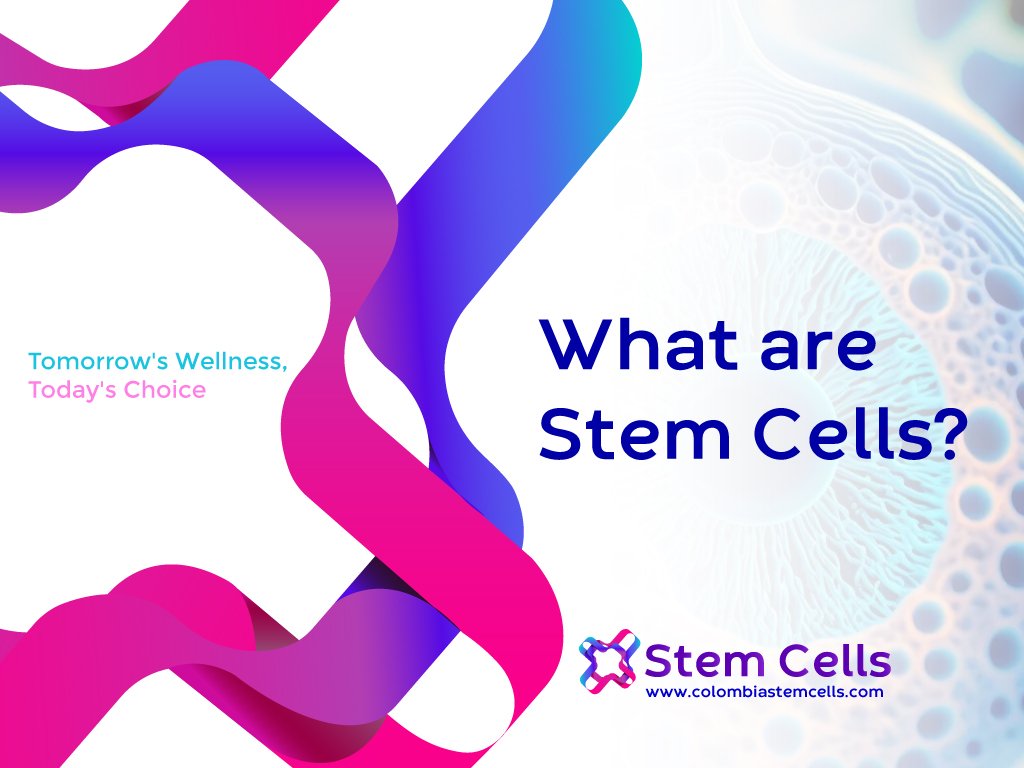What stem Cells
can replace?
What Stem Cells can replace? Stem cells possess an incredible capacity to replace and repair damaged or lost tissues in the body. Their versatility allows them to potentially replace a wide range of cell types and contribute to various therapeutic applications, including:

Blood Cells: Hematopoietic stem cells can replace damaged or depleted blood cells, such as red blood cells, white blood cells, and platelets. This is particularly vital for individuals with blood-related disorders like leukemia or anemia.
Nerve Cells: Neural stem cells can potentially replace damaged or degenerated nerve cells, offering hope for conditions like spinal cord injuries, Parkinson’s disease, and Alzheimer’s disease.
Muscle Cells: Myogenic stem cells can help regenerate muscle tissue and are crucial for repairing muscle injuries or degenerative conditions such as muscular dystrophy.
Heart Tissue: Cardiac stem cells show promise in repairing damaged heart tissue after heart attacks or in cases of heart failure.
Bone and Cartilage: Mesenchymal stem cells can aid in the regeneration of bone and cartilage, offering potential treatments for orthopedic conditions like osteoarthritis and fractures.
Skin Cells: Skin stem cells can replace damaged skin, aiding in wound healing and treatment for burn victims.
Pancreatic Cells: Pancreatic stem cells hold potential for replacing damaged insulin-producing cells in individuals with diabetes.
Liver Cells: Hepatic stem cells may help in regenerating liver tissue, offering new avenues for treating liver diseases and injuries.
Eye Cells: Retinal stem cells are being explored for the replacement of damaged retinal cells in conditions like macular degeneration and retinitis pigmentosa.
Lung Cells: Lung stem cells may contribute to the repair of lung tissue and offer hope for treating conditions such as chronic obstructive pulmonary disease (COPD) and lung fibrosis.
Intestinal Cells: Intestinal stem cells play a role in renewing the lining of the digestive tract and can potentially be used to treat conditions like Crohn’s disease.
Dental Tissues: Dental stem cells can be utilized for regenerating dental tissues, potentially aiding in tooth and gum repair.
Stem cell therapy and regenerative medicine are continuously advancing, with ongoing research aiming to expand the list of conditions and tissues that can be effectively treated or replaced using stem cells. While the potential is vast, it’s important to note that not all stem cell therapies are fully developed, and ethical considerations and safety standards are crucial in their application.
Stem Cell Therapy Breakdown: Types of Transplants and Their Health Benefits with Recovery Periods
Stem cell transplants are used to treat a variety of health problems, and the time duration for recovery and effectiveness can vary depending on the specific type of stem cell transplant and the condition being treated. Here are some common types of stem cell transplants and the health problems they can address, along with general timeframes for recovery and effectiveness:
Hematopoietic Stem Cell Transplant (HSCT):
Health Problems: HSCT, often referred to as a bone marrow transplant, is used to treat disorders of the blood and immune system, including leukemia, lymphoma, multiple myeloma, aplastic anemia, and certain genetic disorders.
Recovery Time: The immediate recovery period in the hospital typically lasts several weeks, with a longer period of monitoring and follow-up. It may take several months to a year or more to fully recover from the transplant, depending on the individual and the specific condition.
Mesenchymal Stem Cell Transplant (MSCT):
Health Problems: MSCT is explored for its potential to treat inflammatory and degenerative conditions such as osteoarthritis, graft-versus-host disease (GVHD), Crohn’s disease, and neurological disorders.
Recovery Time: The recovery period can vary based on the condition being treated. For some inflammatory conditions, improvements may be seen within a few months, but the full benefits may take longer, and ongoing monitoring is often required.
Neural Stem Cell Transplant:
Health Problems: Neural stem cells are being investigated for the treatment of neurological disorders, including Parkinson’s disease, spinal cord injuries, and amyotrophic lateral sclerosis (ALS).
Recovery Time: Recovery and improvement can vary widely. Some conditions may see gradual improvements over the course of months to years, while others may show more immediate or delayed responses to treatment.
Umbilical Cord Blood Stem Cell Transplant:
Health Problems: Cord blood stem cell transplants are used for the treatment of blood disorders, immune deficiencies, and some genetic diseases, often in pediatric patients.
Recovery Time: The recovery period and effectiveness vary depending on the specific condition and the age of the patient. In some cases, improvements may be seen over several months.
Embryonic Stem Cell-Based Therapies:
Health Problems: Embryonic stem cells are being researched for a wide range of conditions, including diabetes, heart disease, and neurological disorders.
Recovery Time: The timeline for recovery and effectiveness in embryonic stem cell-based therapies can be uncertain, as much of the research is in the experimental stage.
iPSC-Derived Organoid Transplants:
Health Problems: Organoids derived from induced pluripotent stem cells (iPSCs) are used for disease modeling and testing potential treatments for various conditions.
Recovery Time: These are not traditional transplants, but rather tools for research. Their use is primarily in the laboratory for disease modeling and drug testing.
Skin Stem Cell Transplants:
Health Problems: Skin stem cell transplants are used for wound healing and the treatment of burn victims.
Recovery Time: Recovery from skin stem cell transplants can vary depending on the severity of the wound or burn but typically occurs over a period of weeks to months.
The effectiveness and recovery time for stem cell transplants can be highly individualized and depend on various factors, including the patient’s overall health, the specific condition, the type of stem cells used, and the success of the procedure. Patients should consult with their healthcare providers for detailed information about their specific cases.
How long it takes to have a stem cell transplant in Colombia?
The time it takes to have a stem cell transplant in Colombia can vary depending on several factors, including the specific type of stem cell transplant, the availability of suitable donors, the patient’s health condition, and the hospital’s scheduling. In general, the process involves several stages and may take several weeks to months:
Evaluation and Preparatory Phase: Before the transplant, patients undergo a thorough evaluation to determine their eligibility. This includes medical tests, compatibility testing if a donor is needed, and assessment of the patient’s overall health. This phase can take a few weeks to complete.
Donor Search and Compatibility Testing: If an allogeneic transplant is planned (where stem cells are obtained from a donor), finding a suitable donor can be time-consuming. It may take several weeks to identify a compatible donor and complete the necessary testing.
Pre-Transplant Conditioning: Prior to the transplant, patients often undergo conditioning therapy, which may involve chemotherapy and/or radiation therapy. The duration of this phase can vary but typically lasts several days to a few weeks.
Stem Cell Collection: For autologous transplants (using the patient’s own stem cells), stem cell collection can take a few days. For allogeneic transplants, it depends on the donor’s schedule and may take several days to weeks.
Transplant Procedure: The transplant procedure itself is relatively quick, often taking a few hours. However, patients are usually required to stay in the hospital for a period following the transplant to monitor their progress and manage potential side effects.
Recovery and Post-Transplant Care: The recovery phase can vary significantly depending on the patient’s response to the transplant and any complications that may arise. Patients typically remain in the hospital for an extended period, which can range from a few weeks to several months.
Follow-Up and Monitoring: Patients require ongoing follow-up and monitoring for months to years after the transplant to ensure the graft is successful, and to manage any potential complications or side effects.
The entire process from evaluation to full recovery can take several months to a year or more. It’s essential to consult with a healthcare team in Colombia to get a more precise estimate based on the specific circumstances of the transplant. The duration can vary based on individual factors and the type of transplant being performed. – What Stem Cells can replace? Article



